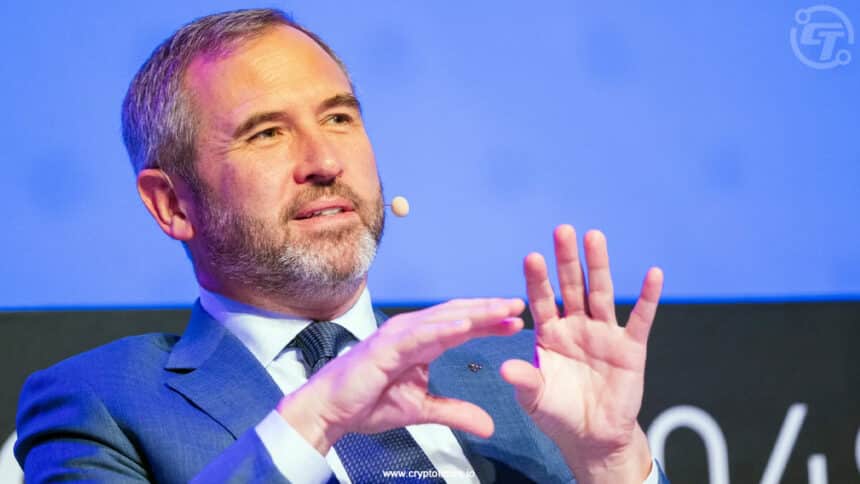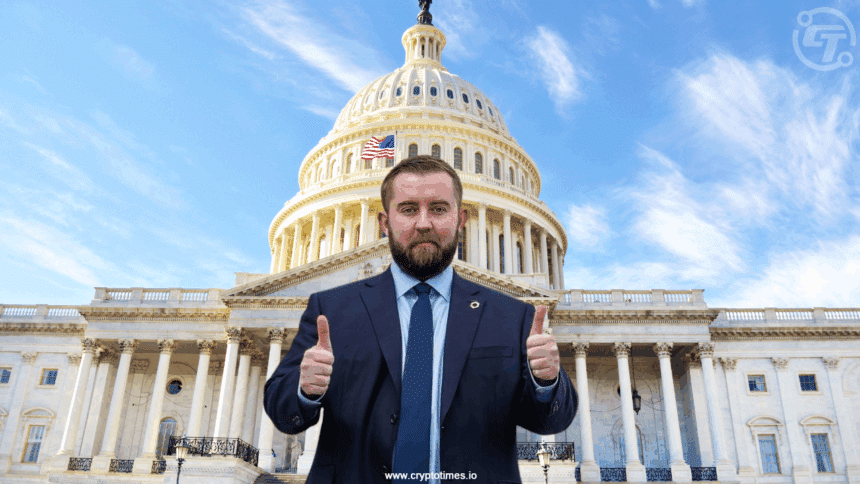Ripple vs. Chainlink: The Billion-Dollar Cage Match for U.S. Blockchain Dominance
Two crypto titans enter—only one leaves with Wall Street’s blessing. Ripple’s regulatory trench warfare clashes with Chainlink’s oracle empire-building as Washington watches.
The payments predator vs. the data oracle: Who’s got the muscle?
Ripple’s XRP army—battle-hardened by SEC lawsuits—is making backroom deals with banks hungry for cheap liquidity. Meanwhile, Chainlink’s LINK marines quietly embedded themselves in every major DeFi protocol, becoming the invisible plumbing of crypto.
Regulators play referee while VCs place side bets. The prize? A golden ticket to rebuild America’s financial infrastructure—with a nice 20% vig for the ’innovation.’
Place your bets: Institutional darling or decentralized dark horse? Either way, the house always wins.
Ripple versus Chainlink: Two Paths, One Goal
It is not imperative that Ripple and Chainlink be engaged in a direct race; both have specific use cases and have chosen separate paths to the White House corridors. How soon the crypto industry can expect a clear, concise, and healthy regulatory framework will depend a lot on how Chainlink and Ripple representatives play it out in the following months.
In this article, we wll explain the different lobbying campaigns carried out by Ripple and Chainlink, that can serve as a precursor for major developments in the web3 sector in U.S.
Ripple’s Direct Lobbying Approach
Ripple operates through an aggressive political strategy that invests heavily to influence government decisions regarding XRP cryptocurrency and XRP Ledger. Ripple dedicates approximately $1 million annually to lobbying activities from 2021 to 2023, thus becoming a prominent political force within the industry.

The company maintains a defensive stance because its prolonged legal dispute with the SEC began in 2020. Ripple accelerated its regulatory shift strategy after July 2023, when a court ruled that XRP sales on public exchanges were not securities transactions and focused on gaining CFTC oversight instead of SEC oversight.
Also Read: The rise and rise of Brad Garlinghouse of Ripple
Ripple’s multi-front lobbying strategy examples:
Ripple invested $710,000 in lobbying activities in 2023, while the total crypto industry spent $20 million that year. Ripple maintained nine political connections in 2023 by hiring former government officials, such as Republican Congressman Mike Conaway, who used their Washington relationships.
It also functioned as the second-biggest contributor to Fairshake super PAC, which raised $92.9 million to fund pro-crypto congressional candidates during the 2024 elections.
Ripple supports the Lummis-Gillibrand Responsible Financial Innovation Act and other bills to reclassify many cryptocurrencies as commodities instead of securities.
Ripple adopts this straightforward strategy to achieve its current business requirements, which include regulatory understanding for international payment solutions and RLUSD stablecoin development. Ripple supports crypto-friendly candidates and challenges SEC jurisdiction to establish room for its technologies in the traditional financial system.
Chainlink’s Strategic Integration Approach
The decentralized oracle network Chainlink has chosen a financial investment strategy that is less expensive but potentially more impactful on blockchain structure. The company directs its efforts towards becoming foundational infrastructure that supports crypto innovation together with traditional finance modernization instead of spending mostly on lobbying activities.

Chainlink’s approach centers on multiple factors
Strategic partnerships with Swift Fidelity International DTCC and Euroclear show Chainlink’s ability to unite traditional finance with blockchain technology.
The regulatory needs of transparency, data accuracy, and compliance are addressed through Cross-Chain Interoperability Protocol (CCIP), Proof of Reserve (PoR) and Smart Value Recapture oracles, which are technical solutions from Chainlink.
Chainlink demonstrates its importance for government financial innovation through its participation in initiatives like the Central Bank of Brazil’s Drex CBDC project.
The co-founder of Chainlink, Sergey Nazarov, actively participates in Washington D.C., according to unverified reports that suggest he influences crypto legislation.
Also Read: “Crypto industry was unfairly targeted”: Chainlink Founder Sergey Nazarov
Chainlink aims to become essential to both crypto markets and established financial systems through its implementation in compliant blockchain structures and its development of regulatory solutions, which could potentially lead to enduring control of regulatory standards.
Ripple vs Chainlink: Contrasting Philosophies of Influence
Ripple and Chainlink follow different strategies because they operate at different levels of the blockchain market and face varying regulatory challenges.
The direct lobbying activities of Ripple exist because of immediate business requirements. Ripple must receive urgent regulatory relief because it faces SEC enforcement and needs to validate both XRP and RLUSD while operating as a company. The company invests its financial resources into lobbying and political campaigns to speed up favorable policy changes that support its business model.
Chainlink, meanwhile, faces fewer direct regulatory threats. The network operates as an oracle system instead of issuing cryptocurrency, which allows it to provide infrastructure for compliant blockchain applications. Chainlink establishes its influence through its technical problem-solving capabilities, which resolve blockchain regulatory issues about reliability and transparency.
The Trump Administration Factor
The 2025 presidential victory of the Trump administration adds a new layer to this political dynamic. Now, the companies could discover fresh possibilities to progress their agendas because of the new government’s pro-crypto position and the expected decrease in SEC oversight.
The favorable classification of XRP by regulatory bodies could become possible as Ripple faces less aggressive enforcement actions. The administration’s potential adoption of a blockchain financial system could accelerate the implementation of Chainlink oracle solutions in government institutions and regulated organizations.
Conclusion
As the blockchain industry is gaining more mainstream adoption, firms like Ripple and Chainlink boosted their approaches for industry-government relations in emerging technology sectors. Both adopt different strategies, but the goal is the same: growth and innovation. Now, the success of these divergent strategies will likely depend on how U.S. crypto regulation evolves under the new administration.

